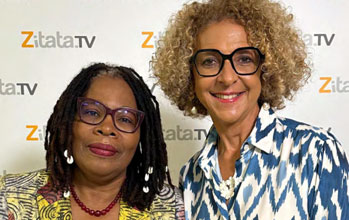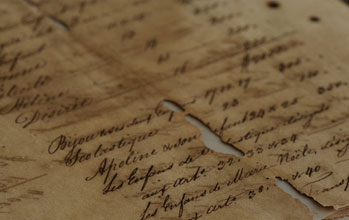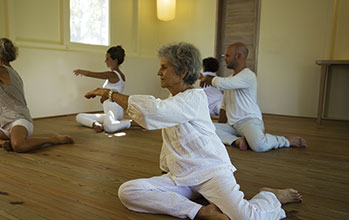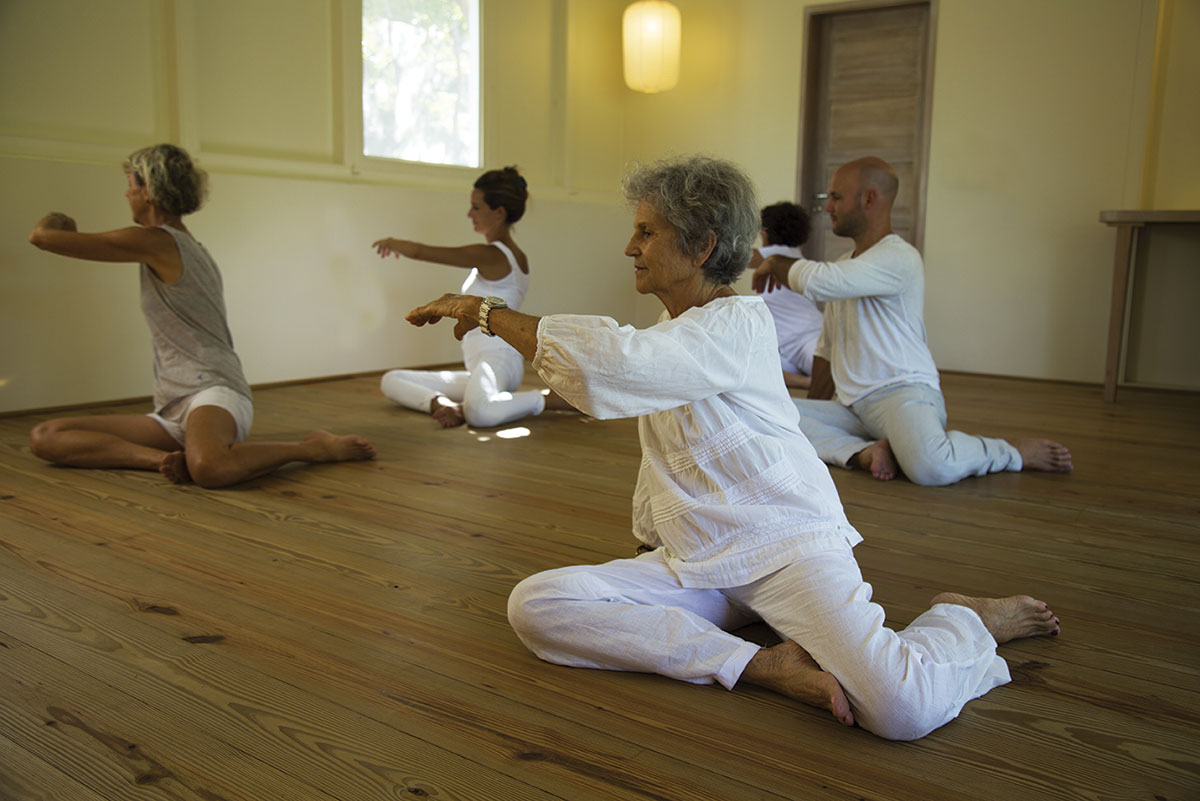 Meeting Mady was a stroke of fortune, a connection of soul and spirit. This intuitive understanding transported me into her world to open myself to the practice of Feldenkrais. With purity, naturalness, elegance and authenticity, this 78-year-old life lover shines and exudes health and beauty. Mady lives in symbiosis with Feldenkrais, which she says is inseparable from life, and here explains the fundamentals and benefits of this practice.
Meeting Mady was a stroke of fortune, a connection of soul and spirit. This intuitive understanding transported me into her world to open myself to the practice of Feldenkrais. With purity, naturalness, elegance and authenticity, this 78-year-old life lover shines and exudes health and beauty. Mady lives in symbiosis with Feldenkrais, which she says is inseparable from life, and here explains the fundamentals and benefits of this practice.
“Make the impossible possible, the possible easy, the easy pleasant and finally elegant.” This is a quote from Moshe Feldenkrais that Mady Rimbaud uses to introduce her practice.
“Children learn movement, walking, crawling through exploration, and with what they feel. The Feldenkrais method allows reusing movement with attention to rediscovering this way of learning. It’s about going the reverse way as when we were babies, but with attention, to finding biological functioning and reconnecting with our unlimited infant potential.”
Our education, the society in which we grew up, inculcated us with rules, patterns, taboos, which gradually disconnected or diverted us from our potential. The Feldenkrais Method creates conditions allowing us to return to the path of learning and to find in ourselves alternatives to our lack of suppleness, poor posture, pain and to develop our potential. It favors rebirth through the exploration of movements reactivating connections with the brain and our nervous system which alone integrates the path already elaborated as a baby.
” Feldenkrais uses movement as a context to discover, through the attention we pay to ourselves, the way we act, our habits, our limitations, and offers various explorations that will provide information to the brain whose plasticity will lead to learning a better way to function. ”
“This new openness frees us from our compulsive way of functioning, thinking and acting. It influences our emotions, our physical sensations, our choices. It rehabilitates our potential and leads us to become better humans. ”
This practice is done gently and conscientiously: “In fact, we replace effort with organization, so as to find a more comprehensive distribution of movement which will contribute to making it easier, more pleasant and more harmonious. The session nonetheless involves challenges to our bodily intelligence. Often movements are unusual, unexpected, which makes the experience stimulating. The focus is on feeling and inner experience rather than performance and purpose. Everyone discovers from within and by themselves what is good for each of them without depending on the outside. ”
Freed from unnecessary efforts, the nervous system can turn to other areas of attention that enrich our lives. The ability to pay attention to oneself develops, allowing more choices and nuances in our actions and more serenity in the face of difficult or new situations.
The Feldenkrais method allows an authentic return to self. These sessions have little in common with most forms of movement education. It is not about mechanical repetitions for muscle-building, stretching to add flexibility to the body or “pull off” a movement but about explorations which make it possible to discover one’s habits and limitations and find new possibilities.
“Transposition in life is immense: How can I do what is possible now, easily. And I find that what I thought impossible becomes possible. We discover a facility to do what we want to do.
Feldenkrais has developed a pedagogy to develop awareness, quality and diversity of gestures. But movement always comes with our feelings, emotions and thoughts, so much that the quality of our whole life can blossom through this step: “knowing what you do in order to do what you want. ”
This method is for people of all ages, regardless of their health condition. Movement awareness sessions are taught in groups and functional integration sessions are taught in one-to-one sessions.
“Practicing Feldenkrais allowed me to clarify my priorities. I was surprised to be able to make choices that were difficult for me, based on my inner experience rather than external pressures. Little by little, an inner calm has set in, with more maturity and another way of relating to others. ”
Mady Rimbaud, lover of life’s movement
Initially, Mady was a physiotherapist with a passion for theater.
In the 70s, Mady did an internship in Paris with Feldenkrais for theater actors. She became fascinated by his genius and the discovery that flexibility and ease are acquired with the awareness that the body is a whole. “The impossible becomes possible, easy, pleasant and beautiful”, because we address the brain rather than muscles, organic intelligence rather than compulsive efforts. This practice helped her in drama, in her way of moving and expressing herself. She did a 2nd internship in the USA for one year and then completed her training in Paris in 1991, after a long journey of travels to Hawaii, Southeast Asia and Australia.
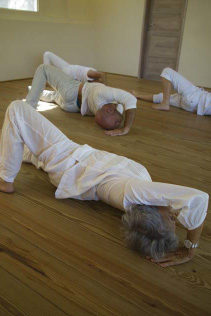 After her certification, she moved to St Barths in 1991, where she has been teaching Feldenkrais since. The Antilles are not a discovery: Mady was born in Guadeloupe, her parents were from Martinique, so she grew up between Martinique and Guadeloupe and always came to St Barths on vacation. She chose St Barths to settle with her husband.
After her certification, she moved to St Barths in 1991, where she has been teaching Feldenkrais since. The Antilles are not a discovery: Mady was born in Guadeloupe, her parents were from Martinique, so she grew up between Martinique and Guadeloupe and always came to St Barths on vacation. She chose St Barths to settle with her husband.
Mady practices in her studio in Corossol and created the Feldenkrais St Barth association which now includes 5 certified practitioners: herself, Brigitte Feillet, Hoelenn Lédée, Xavier Lédée and Corinne Dejouany.
Moshe FELDENKRAIS, founder of the method
The Feldenkrais method was created by DR. Moshe FELDENKRAIS (1904-1984). Born in Ukraine, he emigrated to Palestine at the age of 14, then to France where he became Doctor of Science and collaborated with F. Jolliot-Curie and P. Langevin. After a knee injury, he undertook to find use of his legs by himself and began developing his method: a system of learning by movement based on the ability of the nervous system to build, renew our action plans and learn throughout life. This method is a reflection of his multidisciplinary career as an engineer, a judoka and on research he conducted on the functioning of the brain and nervous system.
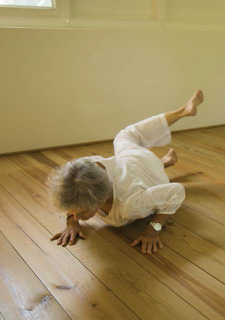 “Experience shows that age has only a minimal influence on limitations, that we can restore the body’s ability to do all the movements that our anatomical structure allows. What I’m looking for is flexibility of mind ”
“Experience shows that age has only a minimal influence on limitations, that we can restore the body’s ability to do all the movements that our anatomical structure allows. What I’m looking for is flexibility of mind ”
” Movement is life. Life is a process. Improving this process is improving the quality of life.”
Claire Richer

